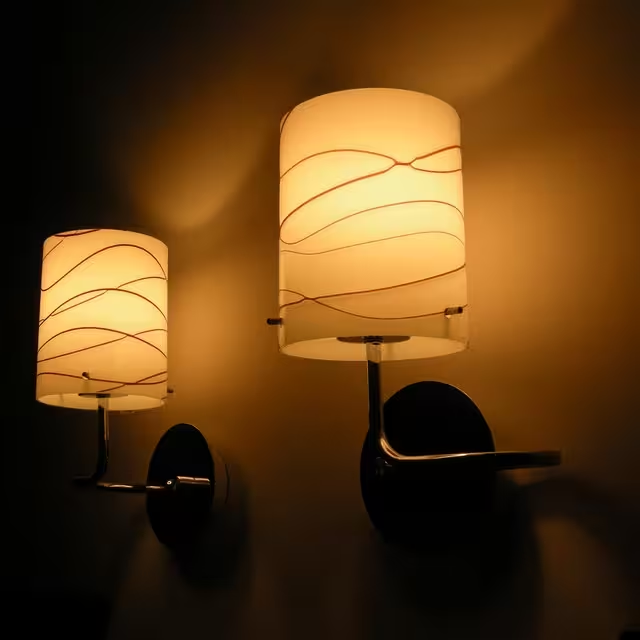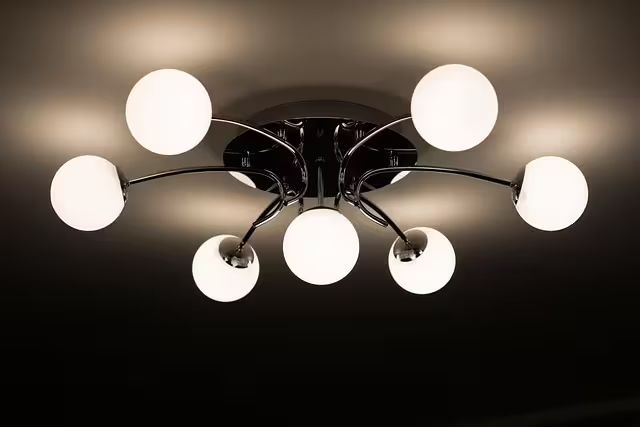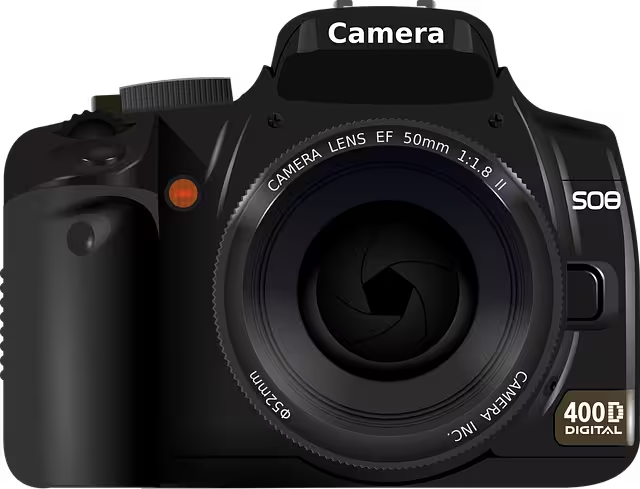One can learn a great deal by observing the environment of a luxury jeweler or a high end car showroom. Notice the deliberate and precise use of lighting. Spotlights are angled to catch the facets of a diamond, making it sparkle with brilliance. Soft, ambient lighting is used to reflect flawlessly off the polished hood of a new vehicle, conveying quality and prestige. This is no accident. It is a carefully engineered environment where light is the silent salesperson.
In the world of e-commerce, a similar, though digital, sales force is at play. Many online businesses focus intensely on product descriptions and technical specifications, yet they often overlook the powerful, subconscious influence of their store’s visual presentation, specifically its digital lighting.
The core problem is that poor or inconsistent lighting on a website devalues products, erodes customer trust, and creates a confusing user experience. It is the digital equivalent of a poorly lit, messy storefront.
This article will analytically deconstruct how light, both in your product photography and your website’s design, directly influences online shopping behavior. We will provide a strategic framework you can use to implement these principles, transforming your WooCommerce store from a simple catalog into a carefully curated and persuasive shopping environment.
Table of Contents
The Psychology of Light in Consumer Behavior

Before we can optimize our digital storefronts, we must first understand the foundational principles at work. The way humans react to lighting is deeply ingrained. For centuries, light has meant safety, clarity, and knowledge, while darkness has been associated with uncertainty and risk. These primal responses carry directly over into the modern digital marketplace. The strategic use of light in e-commerce is not merely about making things visible; it is about shaping perception and guiding emotion.
Emotional Response to Lighting
The brightness and intensity of your site’s lighting have a direct impact on a customer’s mood. This is a critical factor because emotion often drives purchasing decisions.
- High Key Lighting: This refers to bright, evenly lit scenes with minimal shadows. This type of light creates feelings of optimism, energy, cleanliness, and honesty. It is an excellent choice for health and wellness products, cleaning supplies, and brands that want to appear modern and accessible. Bright light suggests there is nothing to hide, which is a powerful message for building initial trust with a new visitor.
- Low Key Lighting: This style uses high contrast with deep shadows and focused pools of light. It cultivates a sense of drama, sophistication, luxury, and mystery. Premium brands selling items like high end watches, gourmet foods, or exclusive tech gadgets often use this type of light. The shadows create a sense of intrigue, making the illuminated product feel more special and desirable. This lighting style tells the customer that the product is for a discerning individual.
Choosing the right emotional tone through light is the first step in aligning your brand’s visual identity with your target audience’s expectations.
Perceived Value and Quality
Imagine two identical products for sale online. One is shown with a single, flat, overhead light that casts a harsh shadow. The other is photographed with a professional, multi point lighting setup that defines its shape, showcases its texture, and presents it against a clean background. Which one would you assume is of higher quality? Which one would you be willing to pay more for?
The answer is obvious. Professional lighting directly increases the perceived value of a product. Good lighting communicates care, investment, and professionalism. It suggests that the seller is serious about their products and their business. Conversely, poor lighting, such as photos that are too dark, blurry, or have strange color casts, makes a product look cheap and untrustworthy. It can make a high quality item appear to be a low quality imitation. This is one of the most common and easily fixable mistakes in e-commerce, yet it persists. Effective lighting is an investment that pays for itself by allowing you to command better prices and build a stronger brand reputation.
Building Trust and Transparency
Online shopping carries an inherent risk for the consumer. They cannot touch, hold, or inspect the product in person. Their entire decision rests on the information you provide, and the most important information is visual. Bright, clear, and accurate lighting is essential for building trust.
When a customer can clearly see every detail of a product, from the texture of the fabric to the fine print on the label, they feel more confident in their decision. The light should reveal, not conceal. Shadows, while useful for creating mood, should never obscure important features of the product. If a customer has to guess what a part of the product looks like, they are more likely to abandon their cart than to take a risk. Complete visual information, enabled by excellent lighting, reduces uncertainty and minimizes the primary friction point in online sales. This transparency is key to converting hesitant browsers into confident buyers.
The Impact of Color Temperature
Not all light is the same color. The color of light is measured on the Kelvin (K) scale, and this “color temperature” has a significant psychological effect.
- Warm Lighting (2000K-3000K): This light has a yellowish or reddish tone, similar to a sunset or a candle flame. It creates a feeling of warmth, comfort, and coziness. This type of light is highly effective for brands selling home goods, furniture, food items, or anything related to comfort and relaxation. It makes the product feel inviting and familiar.
- Cool Lighting (4000K-5000K): This light has a bluish or pure white tone, similar to daylight. It conveys a sense of cleanliness, focus, modernity, and precision. Cool lighting is ideal for electronics, medical equipment, industrial products, and cosmetics. It highlights technical details and gives an impression of high performance and efficiency.
The color temperature of the lighting in your product photos should match the intended use and feeling of the product itself. Using the wrong lighting temperature can send a confusing message to your customers.
The Pillars of Digital Lighting for E-Commerce

Now that we understand the psychology, let’s translate it into the two main areas where digital lighting is applied: product photography and website design. Mastering both is essential for creating a cohesive and effective online shopping experience.
A. Product Photography: The Primary Sales Tool
Your product photos are the most critical element of your online store. They are your product’s digital handshake. The quality of the light in these photos can make or break a sale.
- Brightness and Exposure: Exposure is simply how much light reaches the camera’s sensor. An underexposed photo is too dark, hiding details in shadow. An overexposed photo is too bright, washing out details and colors. The goal is a balanced exposure where the product is bright, clear, and easy to see. This is the foundation of good product photography lighting. Your product should be the best lit object in the frame, instantly drawing the customer’s eye.
- Contrast: Contrast is the difference between the light and dark areas of an image. High contrast images have deep blacks and bright whites, making them feel bold and dynamic. Low contrast images have a narrower range of tones, feeling softer and more subtle. The right level of contrast makes a product “pop” off the page. When setting up your lighting, using a main light and a fill light can help you control contrast, ensuring that shadows add depth without hiding product features.
- Shadows: Shadows are not the enemy; they are a tool. The type of shadow you create depends on the size and distance of your light source. A small, distant light source creates hard, well defined shadows. A large, close light source creates soft, gentle shadows with smooth transitions. For most e-commerce products, soft shadows are preferable. They create a sense of depth and realism without being distracting. Hard shadows can be used for dramatic effect, but should be used with care. The quality of the shadow lighting tells a story about the product’s form and texture.
- Color Accuracy: The lighting you use directly affects the color of your products. Using a light source with a poor Color Rendering Index (CRI), or mixing different types of lighting (like daylight from a window and a warm incandescent bulb), can result in photos where the product’s color is not true to life. This is a major cause of customer dissatisfaction and product returns. The goal is to use consistent, high CRI lighting to ensure that the color a customer sees on their screen is the color of the product they receive in the mail. This is a non negotiable aspect of professional lighting.
B. Website Design (UI/UX): Guiding the Customer’s Eye
Beyond your product photos, the overall lighting of your website design plays a huge role in the user experience (UX). It can guide attention, reduce confusion, and make the process of shopping feel easy and intuitive.
- Visual Hierarchy: Just like in a physical store, you can use digital light to guide your customers. Important elements, like the “Add to Cart” button or a “Limited Time Offer” banner, should be the brightest and most eye catching things on the page. This can be achieved through brighter colors, subtle glows on hover, or by placing them in a well lit area of the page design. Good light creates a clear path for the user to follow, from browsing to checkout.
- Negative Space and Brightness: Negative space, the empty area around your content, is not wasted space. When a website has a bright, clean layout with plenty of negative space, it feels open and easy to navigate. This reduces cognitive load, meaning the user doesn’t have to work as hard to understand the page. A cluttered, poorly lit website feels stressful and confusing. Bright and airy design is a form of functional lighting that makes the entire shopping experience more pleasant.
- Dark Mode vs. Light Mode: Offering different site wide lighting themes is becoming more common. A traditional “light mode” with a white or light gray background is the standard for most e-commerce sites. It is open, accessible, and works well for a wide variety of products. A “dark mode” with a black or dark gray background uses reverse lighting principles. It can create a sense of luxury and focus, making it a great choice for high end tech, fashion, or entertainment brands. The choice of which lighting mode to use, or whether to offer both, should be a strategic brand decision.
A Tactical Framework for Your WooCommerce Store

Understanding the theory is one thing; implementing it is another. Here are practical, actionable steps you can take to improve the lighting on your WooCommerce store today.
Product Image Optimization
Your product images are your most valuable assets. They deserve a consistent and professional lighting approach.
- Create a Lighting Guide: Document a standard lighting setup for all your products. This should specify the type of lights to use (e.g., two softboxes and one backlight), their placement, their power settings, and the camera settings. This ensures that every product photo has the same high quality light, creating a cohesive and professional look across your entire store.
- Use 360-Degree Photography: Many WooCommerce plugins support 360-degree product views. When creating these, consistent lighting is even more critical. The product must be evenly lit from all angles to create a seamless and realistic spinning image. This level of detail builds immense purchase confidence.
- Prioritize High Resolution: Use high quality images that remain clear and detailed when a customer uses WooCommerce’s zoom feature. Good lighting ensures there are interesting details to see when they zoom in, reinforcing the quality of your product.
WooCommerce Product Page Layout
The design of your product pages should support and enhance your product photography, not compete with it.
- Use a Clean Background: For most product pages, a pure white or very light gray background (#FFFFFF or #F5F5F5) is the best choice. This acts like a clean, well lit studio, ensuring there are no distractions. It makes your product’s colors appear more vibrant and allows your carefully crafted photo lighting to do its job.
- A/B Test Your CTAs: Your “Add to Cart” button is the most important button on the page. Use your website’s analytics to A/B test different colors and effects. Try a version where the button gets slightly brighter or has a subtle glow when a user hovers over it. This use of interactive lighting can draw attention and increase click through rates.
Category and Shop Page Visual Merchandising
The impression your store makes starts on your category pages, where customers see many products at once.
- Ensure Uniformity: The most important rule for category pages is consistency. All of your product thumbnails should have the same background color and the same lighting style. When a customer sees a grid of products that are all professionally and consistently lit, it sends a powerful message about your brand’s quality and attention to detail. This consistent lighting reduces visual friction, making it easier for customers to scan and compare products.
- Use “On Sale” Banners Wisely: When highlighting a sale item, use a bright, but not jarring, banner. This is a form of accent lighting, drawing the eye without creating a chaotic visual experience.
The Future: AI-Enhanced Lighting and Augmented Reality

As an expert in both WooCommerce and AI, I see the future of e-commerce lighting becoming even more sophisticated and automated. These emerging technologies will allow even small businesses to achieve studio quality results.
AI in Photo Editing
Artificial intelligence is revolutionizing photo editing. Tools built into software like Adobe Photoshop and Lightroom, as well as standalone applications, can now use AI to perform complex lighting adjustments automatically.
- Automated Background Removal: AI can perfectly cut a product out from its background, allowing you to place it on a pure white background with ease.
- Smart Shadow Generation: AI can analyze a product and generate a realistic, soft shadow, giving it depth and grounding it on the page.
- Lighting Correction: AI tools can analyze an image, identify lighting problems like poor exposure or incorrect color temperature, and suggest or apply corrections with a single click. This technology drastically lowers the barrier to creating professional product images with perfect lighting.
AI Driven Personalization
Looking further ahead, it is plausible that e-commerce websites will use AI to personalize their lighting in real time. For example, a website could detect that a user is browsing late at night and automatically switch to a “dark mode” theme that is easier on the eyes. It could even analyze a user’s browsing history and subtly adjust the lighting on products to match the emotional tone of items they have previously shown interest in.
Augmented Reality (AR)
Augmented Reality is perhaps the most exciting frontier for digital lighting. Using AR plugins for WooCommerce, customers can use their smartphone camera to place a virtual model of your product in their own home. For this to be effective, the digital lighting on the virtual product must interact realistically with the real world lighting of the customer’s room.
This means the virtual sofa needs to cast a believable shadow on their living room floor. The virtual lamp needs to look like it is actually emitting light. The success of AR in e-commerce depends almost entirely on how accurately it can simulate lighting. As this technology improves, it will represent the ultimate form of transparent and trust building lighting, allowing customers to “try before they buy” in the most realistic way possible.
Conclusion: Illuminate Your Path to Conversion
We have seen that lighting is far more than a simple utility. In the digital marketplace, it is a powerful language that speaks directly to a customer’s emotions and instincts. From the psychological impact of a bright and airy website to the perceived value created by professional product photo lighting, every choice you make contributes to the customer’s journey. Strategic lighting builds trust, communicates quality, and guides users seamlessly towards a purchase.
Ultimately, lighting is not a decorative choice; it is a fundamental, data driven tool for psychological influence in your e-commerce toolkit. To ignore its impact is to leave one of your most persuasive sales tools on the table. I encourage you to perform a simple “lighting audit” of your five most popular product pages today. Analyze them based on the principles we have discussed. Identify one key area for improvement, whether it is improving the shadows, correcting the color, or brightening the page layout. Taking that one small step to improve your digital lighting will be a significant step toward illuminating a clearer and more profitable path to conversion.